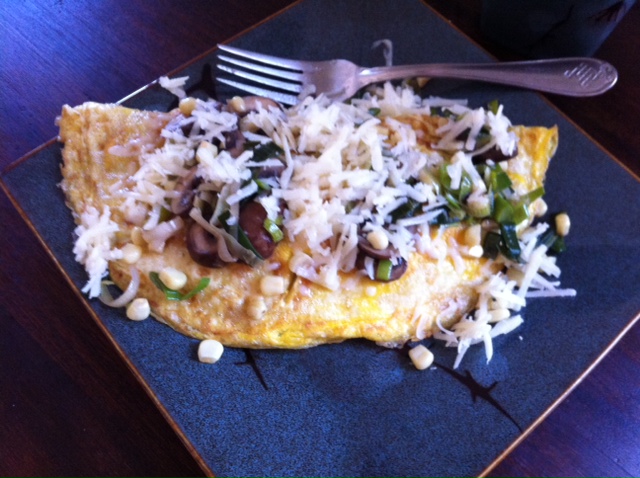31 Jul
Mushroom Croustades or Stuffed Mushrooms, Your Pick (Vegan or Vegetarian)
 The choice between making these as croustades or as stuffed mushroom caps depends on whether you want them to be vegan (croustade shells are not vegan) and/or whether you happen to have any croustade shells handy. In my case, I did just so happen to have some handy as the result of discovering these puppies at Ikea (weird, eh?) and stockpiling about 5 dozen of them like the freakshow that I am. Also I did not have enough mushrooms to do caps. Hence, the croustades you see pictured at right.
The choice between making these as croustades or as stuffed mushroom caps depends on whether you want them to be vegan (croustade shells are not vegan) and/or whether you happen to have any croustade shells handy. In my case, I did just so happen to have some handy as the result of discovering these puppies at Ikea (weird, eh?) and stockpiling about 5 dozen of them like the freakshow that I am. Also I did not have enough mushrooms to do caps. Hence, the croustades you see pictured at right.
Note that you also have a further choice in whether or not to use vegan cream cheese or make a non-vegan goat cheese version. Obviously the goat cheese version is much richer and tangier, but they are both super tasty and perfect as a party appetizer.
Lastly, I garnished these with sauteed porcini mushrooms, but you can garnish them with any kind of mushroom, or chives, or parsley, or whatever floats your boat. If you have access to porcini, I’d say spring for them – they are a bit pricey but you only need about 1/10th of a pound (2 or 3 small ones). Note: Take care when selecting porcini – avoid any with soggy, yellow or greenish parts, and inspect them for holes or little trails – unfortunately, they can be wormy.
Stuffed Mushrooms or Mushroom Croustades
- 2 tbsp olive oil
- 1/2 lb baby bella mushrooms OR 1 lb if you’re making stuffed mushrooms (Note that each version requires different mushroom preparation – see below)
- 1/4 c. chopped parsley
- 2 – 3 large garlic cloves, minced
- 1 shallot, chopped
- Cheese – either:
- 8 oz vegan cream cheese, OR
- 4 oz goat cheese and 4 oz regular cream cheese
- 1/4 tsp cayenne
- Sea salt and ground pepper, to taste
- 1 – 2 tbsp minced chives, for garnish (optional)
Preheat your oven to 350 degrees and set out the cheese to soften. Clean the mushrooms with a damp cloth or mushroom brush.
If you’re making the croustades, slice the mushrooms in about 1/4 inch thick slices, reserving 2 orf 3 big ones for garnish (or you could use the stems), if desired. If you’re making stuffed mushroom caps, break the stems from the caps and chop the stems coarsely, taking care to slice off and discard any tough ends. Set the caps aside.
Heat a large skillet on medium. When the skillet is hot, add the oil. When the oil is hot, add the shallot and garlic and saute for a minute or so, stirring constantly. Add the mushroom slices and cook for about 2 minutes, stirring regularly. After a couple minutes, cover, stirring occasionally, until the mushrooms have juiced (3 – 5 minutes or so). When they’ve juiced, remove cover and continue to cook, stirring regularly until the juice is reabsorbed (1 – 2 minutes).
Transfer to a food processor or blender and pulse the mushrooms a couple times until they’re a quasi-duxelles. (Yeah, okay, I just really wanted to use that word. Color me ostentatious.) Add the cheese and cayenne and pulse a few more times until well blended. Stir in the parsley and season with salt and pepper to taste.
Spoon mixture into croustade shells or mushroom caps (it will probably fill around 2 dozen or so; if you have filling left over, serve it as a dip or use it as a spread). Place them on a baking sheet and bake them in the oven, 5 to 8 minutes for the croustades. For the caps, oil the baking sheets before adding the caps. Bake them for about 12 – 15 minutes or so (basically until the caps are tender), but keep an eye on the filling so it doesn’t burn.
While that’s baking, if you want to make a mushroom garnish, coarsely chop the remaining mushrooms or mushroom bits and saute quickly in olive oil with a bit of garlic, following the directions above. Salt to taste and spoon onto the tops of the baked croustades, and/or sprinkle with chives.
Serve immediately.





Recent Comments